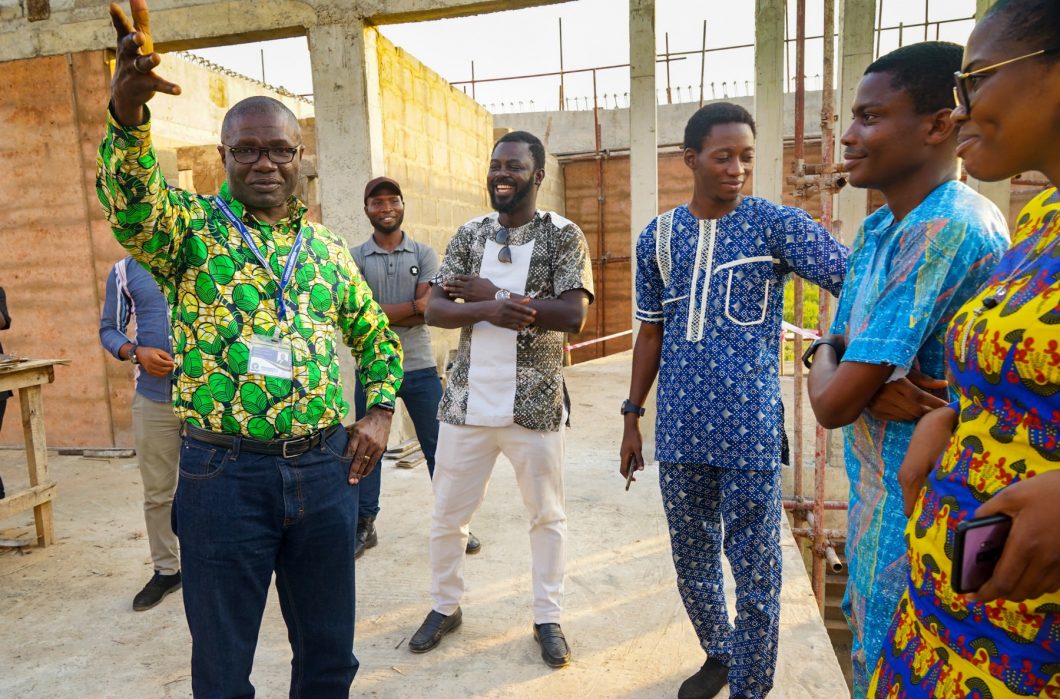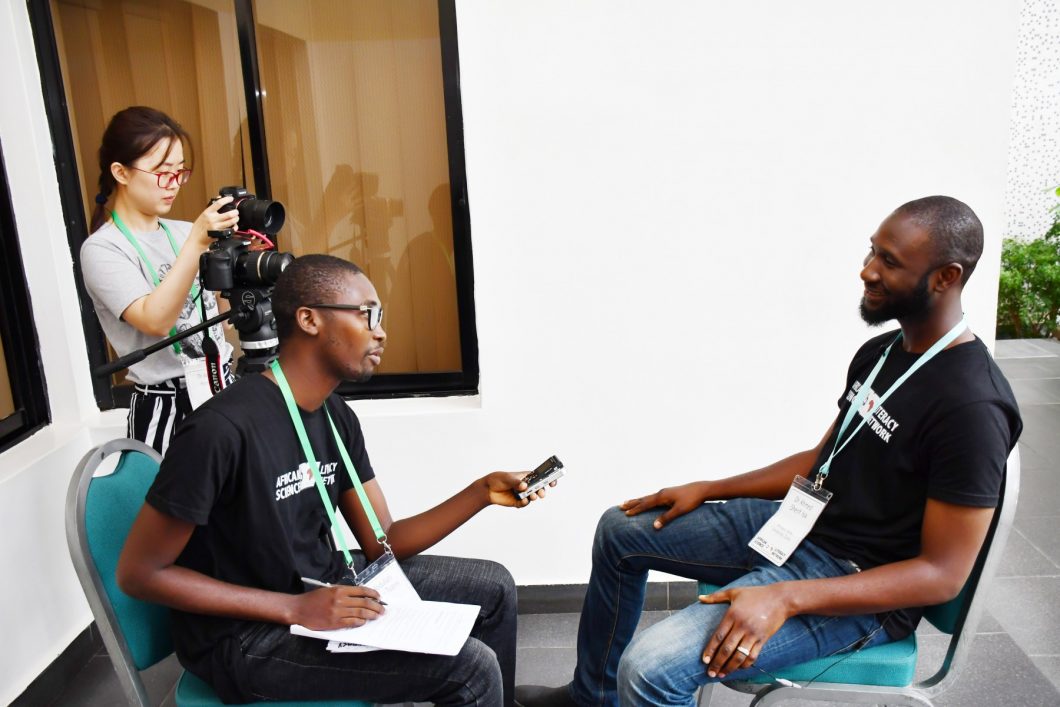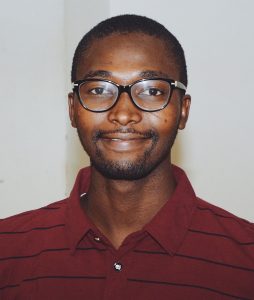
When the first case of the Ebola virus disease was confirmed in Lagos, Nigeria’s commercial capital, in July of 2014, misinformation on the use of salt water for Ebola prevention and treatment went viral across the country on WhatsApp and Facebook. Many Nigerian university students, myself included, received calls and messages from their relatives advising us to drink a saline solution and even bathe in it, to avoid contracting the deadly virus. But there is no evidence that drinking or bathing in salt water prevents the transmission of Ebola.
My experience during the Ebola epidemic made me realize just how low the level of health literacy is among ordinary Nigerians. The lay public does not, to a large extent, understand the science behind the Ebola virus’ transmission. Therefore, people couldn’t decipher between bogus information and advice that might prevent infections. I felt that if people knew the basics of how the virus was spread, they’d be more likely to understand preventive measures and potential treatments.
I was troubled again during the COVID-19 pandemic, as panic about the coronavirus fueled the spread of false COVID-19 remedies in Nigeria. In my country, there seems to be little public interest in science, even though it has the potential to solve critical societal challenges such as food insecurity, climate change, and disease outbreaks.
Recently, some scientists and journalists have been taking steps to change the situation. One of them is Mahmoud Maina, a Nigerian neuroscientist who founded the African Science Literacy Network (ASLN) in October 2019. This platform pairs journalists, including me, with scientists at Nigerian universities to produce science stories. Our goal is to increase science literacy and fuel the public’s interest in research. But some obstacles, including funding, stand in the way.
Still, Maina, now at the University of Sussex in the United Kingdom, is hopeful. “Good science reporting will lead to increased science literacy, public understanding of science, and a well-informed society,” he says.
Science on the Back Page
I connected with Maina in 2018. He made me realize that I was not alone in worrying about the flood of Ebola-related misinformation. He had been so troubled by the lack of sound science in the Nigerian media that he created an online Science Communication Hub that published articles and dispelled scientific misconceptions. This became the precursor for his continent-wide project, the ASLN.
When Maina was growing up, he says, many people in his community had cultural and religious misconceptions about science. “Some kids chanted songs that one would go to ‘hell’ for daring to think about becoming a scientist,” Maina recalls. “Maintaining a passion for science in such an environment was difficult,” he says. But family support and a newfound interest in neuroscience made him unrepentant in his pursuit of a science career. After completing his degree in anatomy, Maina traveled to the United Kingdom for postgraduate studies in neuroscience.
Back in Nigeria, however, scientific literacy remained low. One of the reasons for this is lack of science coverage in the media. Ruona Meyer, a Nigerian investigative journalist based in Berlin, says this lack is caused, in part, by an absence of training in science journalism and by the fact that too few editors and journalists have a science background. “Many editors do not encourage science reporting because it is abstract—they don’t understand it. And it’s very clear that if science is reported wrongly it could even lead to deaths or destroy a scientist’s reputation,” she says.
Meyer says that to increase science reporting, editors should recruit scientists who are interested in journalism, as opposed to journalism graduates, and train them in the trade. She suggests that newsrooms could offer journalism training, internships, or fellowship opportunities to people who graduate with degrees in microbiology, botany, and other scientific fields.
Another problem is that although scientific issues such as health and agriculture are central to people’s lives, most readers seem to be more interested in politics, sports, entertainment, or business news. And general media organizations gravitate towards content that appeals to their audience, says Adaobi Ezeokoli, editor-in-chief of Nigeria Health Watch, a health communications outlet based in the capital city, Abuja, that provides reliable health information to the public, and advocates for stronger health policy in Nigeria.
Ezeokoli says her team consists of science-focused writers or scientists who are interested in journalism. “Having that double layer of expertise allows us to tell health stories in a way that is relatable and easy to understand,” she says.
Bolstering Science Journalism
Maina has taken a different avenue than creating a niche outlet like Nigeria Health Watch. As a researcher, he decided that scientists like him needed to reach out to journalists who have the ability to influence society through the media.
In 2019, Maina won a Wellcome Trust grant to establish the ASLN. Within a few months, he traveled, together with science communicators from the United Kingdom, to Abuja. They organized a two-day science communication training, with 70 journalists and scientists in attendance, including me. They focused on a handful of topics such as how to write credible science stories and how to promote scientific research to the public. In addition, the journalists were taught concepts such as how to read scientific papers, how to interview scientists, and how to understand basic statistics. Next, scientists were paired with journalists from the same region, and with funding from ASLN, each team submitted a science communication project about a research program happening in their locality.
Already, my cohort has written over 60 articles on a range of science topics, which have been published on several national news platforms, says Ruth Larbey, a science communication specialist at the University of West England, Bristol, U.K., who is conducting an evaluation on the project’s impact. Over half of the articles are on the coronavirus pandemic, including my own.

Although I have a degree in biochemistry, I attended the workshop as a science writer because journalism has been my focus for the past year. I was paired with a scientist at Ahmadu Bello University, in the northern state of Kaduna. In June, he worked with other scientists to fight COVID-19 misinformation in several local languages in Nigeria, and I reported on the effort for Nigeria Health Watch. That experience was eye-opening, and timely, as panic over the coronavirus fueled rumors.
Other projects in the network have varied widely. One of my colleagues, Justina Ashishana, a journalist at the Nation Newspaper, is working on a piece about blindness in children. She says the neuroscientist she was paired with patiently explained concepts such as low visual acuity and the difference between low vision and blindness. “I no longer have anxiety over understanding scientific jargon,” she says. “Scientists in the network help me explain complex terms.”
Meyer, who wasn’t a part of ASLN, says the initiative will foster cohesion between Nigerian science journalists, who are few relative to those in other beats. And it will also promote collaboration between scientists and journalists to bring vital information about science to the public. The scientists in ASLN review the final stories, and correct any errors, but editors have the final say. I understand that this sort of collaboration may be considered problematic in countries like the United States, where a robust science journalism field already exists. But editors in Nigeria aren’t as concerned, because the overlap between science and media is virtually non-existent, and therefore must be encouraged. That isn’t to say that ASLN’s model is perfect. Scientists can introduce their own biases or conflicts of interest. They tend to have little understanding of journalistic nuances and editing processes, which can lead to disagreements over issues such as the choice of a headline, use of words, or in-house writing styles.
Overcoming the Obstacles
Although ASLN has introduced me to Nigerian scientists doing fascinating work, the network doesn’t give me the training required to become a science journalist. In order to get this, I have found mentors in various places, including through writer interviews at The Open Notebook.
I have also faced other barriers to science reporting in Nigeria, such as travel visa issues. For example, in March 2019, I was one of only 20 African journalists granted a scholarship to attend a weeklong science reporting workshop organized by UK Research and Innovation in partnership with the World Federation of Science Journalists in Oxfordshire, U.K. But despite my award, my visa was turned down by the U.K. government. Although my award covered all expenses for my stay, including a stipend on arrival, the visa officer ignored the award, reviewed my personal finances, and determined that I didn’t have sufficient funds to care for myself.
Also, there are vanishingly few opportunities to be hired as a paid intern at newspapers and magazines in Nigeria. Another ASLN fellow, Paul Adepoju, a freelance science journalist based in Ibadan, says fellowship opportunities available for Nigerian journalists are very competitive. “We need more support to improve our craft and skills,” he says.
Maina doesn’t think his work is complete, either. Although ASLN provides a platform for scientists and journalists to generate science stories, he worries that many Nigerians still fail to understand why science matters. “I would love to see us expand our work by empowering more scientists and journalists to raise awareness about the importance of science in the society,” he says. “But this depends on funding.”
Indeed, a lot of challenges remain, but it’s vital we overcome them. Science journalism has a critical role to play in informing and educating the public and policymakers about advances in scientific innovation and technology. It could also lead to more investment in scientific research and development by the government and the private sector, which would help Nigeria realize its potential in the sciences. “We need science journalism in Nigeria,” says Meyer. “We have to consistently blend the science and journalism worlds.”

Abdullahi Tsanni is a science writer based in Abuja, Nigeria. He has reported on science, health, agriculture, and biotechnology issues in Nigeria for publications including Nature, AllAfrica, Cornell Alliance for Science, Nigeria Health Watch, and African Newspage, among others. Abdullahi has interviewed top scientists across sub-Saharan Africa, detailing stories about their research, workspace, and scientific enterprise on the continent. He works as a volunteer with Science Communication Hub Nigeria and African Science Literacy Network, helping with communications and providing input on media partnerships. He has a degree in biochemistry and is a prospective master’s student in science communication at Imperial College London as well as a TON early-career fellow sponsored by the Burroughs Wellcome Fund. Follow him on Twitter @abdultsanni.


